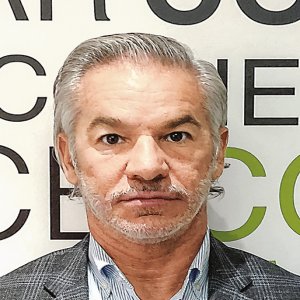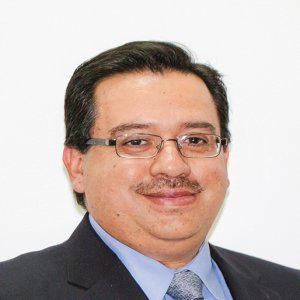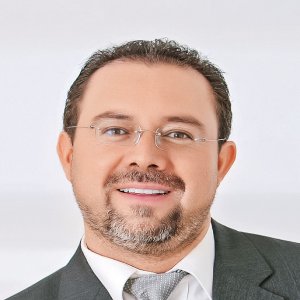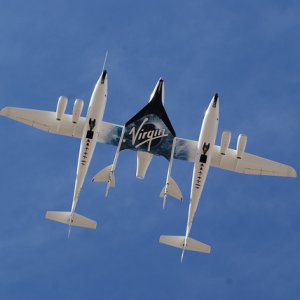Mexico’s Flagship Carrier Champions Economic Development

STORY INLINE POST
Q: How has the airline industry evolved since you took the reins of Mexico’s flagship airline?
A: The entire aviation industry, including Aeroméxico, was destroying capital back in 2005 because airlines did not focus on additional or long-term capital investments. The industry has since become an attractive sector for investment. Looking at variables such as the size of the industry, the average age of the fleet and the strength of human capital, it is evident that the industry is much stronger now than 13 years ago. For us, Delta Air Lines’ investment in Aeroméxico highlights the evolution the industry has undergone since then.
Q: What are the main concerns that influence Aeroméxico’s general strategy?
A: Aeroméxico concentrates on hedging its risk based on the three variables that impact our financial performance the most: exchange rates, jet fuel prices and real economic activity. Our sources of foreign revenue are similar to our foreign expenses, which eliminates the need to go to financial markets and bet against exchange rates. Regarding fuel, we rely on the oil derivatives market, hedging half of our jet fuel consumption.
The worst mistake in this industry is overcapacity, which is why we have staggered leasing contracts to adjust for contingencies. We own between 35 and 40 percent of our aircraft and lease the rest. If something goes wrong, we downsize by not renewing aircraft leasing contracts. On the other hand, if things go well, we just agree to new leases.
Q: What is Aeroméxico’s strategy to improve passenger experience?
A: Our goal is to offer the best experience every time, which is key long-term sustainability. The bulk of our expenses is oriented to buying new aircraft along with technological investments, which are divided among all of Aeroméxico’s projects to empower our passengers. Our digital ecosystem, including our webpage, app and airport kiosks, is designed to provide all our customers with greater control of their travel experience.
Q: What areas of passenger experience are the top priorities for Aeroméxico?
A: When asked about customer experience, people think about the Boeing 787 Dreamliner and onboard experience. However, the worst thing that can happen to a passenger is a flight cancellation. We are refocusing our efforts to deliver the most reliable service. For example, in October 2017, we set a record for the industry and our airline with only three flight cancellations, which was a great achievement since we operate between 650 and 700 daily flights.
Q: How sensitive are Aeroméxico’s operations to natural phenomena and how does that impact passenger experience?
A: A narrow-body usually flies four or five daily trips for any airline, so if a plane is delayed for any reason throughout the day (including weather delays), the remaining operations involving that plane will most likely be delayed. Passengers may see clear skies at night and think they are being deceived by the airline when told that fog or a similar phenomenon set the flight back. But if an aircraft is delayed for three hours in the morning, this delay will have a domino effect for the rest of the day.
Q: How is the growing competition pushing Aeroméxico to reinvent itself?
A: Aviation is one of the most competitive industries and Mexico’s airline market is largely divided in three similar parts. Aeroméxico also competes with some of the best airlines in the international market, including British Airways, Lufthansa, Iberia, Air France-KLM, American Airlines, Avianca, United Airlines, Japan Airlines and ANA. Having strong competitors in and out of Mexico is what drives Aeroméxico to reinvent itself.
Q: What challenges does a saturated AICM pose to Aeroméxico and how does the airline address them?
A: The main problem at AICM is not the airport terminals but the available number of slots. More than 20 companies are flying through AICM, which suggests that lack of space is not the problem. Aeroméxico can increase its seat offering by 30 percent in the next five years without changing its current number of slots and aircraft. Additionally, our fleet strategy gives us flexibility, since we only operate three types of aircraft, which reduces operating costs, and are increasing our fleet size at AICM. Aeroméxico Connect flies an all-Embraer fleet and Aeroméxico sticks to Boeing 737 and 787 aircraft.
Q: Some governments are highly proactive with their flag carriers. How does Aeroméxico interact with the government?
A: Airlines are important for economic development because when international companies ponder where to invest, one of the first concerns is connectivity. It is necessary to have a hub-and-spoke model to connect a city, since it is impossible to do only point to point. Aeroméxico made its case with Mexico’s anti-trust authorities regarding our number of slots at AICM, as the authorities believed we have too many. However, compared to other flagship carriers that usually have 80 percent of the slots in their hub airports, Aeroméxico holds only 43 percent. Taking away and limiting the number of slots makes it impossible to implement a hub-and-spoke model, which harms the ability of airlines to connect the country.
Q: What should the new administration do to support the growth of the airline industry and its national carriers?
A: The Mexican airline industry has consolidated through several bankruptcies. In the last 10 years, 10 airlines went bankrupt. This should not be the case. The authorities should change their approach to consolidation so economic cycles happen in an orderly fashion rather than as disruptive processes that bankrupt companies.
First, the government must be disciplined in its macro policies and focus on providing security, education and health using fiscal discipline while maintaining an independent central bank that fights inflation. Because of the spike in oil prices, we saw a rise in inflation followed by the depreciation of the peso. Also, the aviation industry needs better infrastructure and the industry’s regulatory framework should be strengthened.
Q: What is Aeroméxico’s strategy to compete against low-cost Mexican carriers?
A: A flight seat is not a commodity. People cannot expect to pay the same price for a flight seat in the Mexico City-Monterrey route on Aeroméxico compared to other carriers, when we offer 25 daily flights for that route, the chance to earn miles and both business-class and economy seats.
It is impossible to be a low-cost carrier, a charter, a cargo airline and a full-service airline at the same time. Each company must focus on the area in which it excels. However, we also offer tailor-made products for price-sensitive passengers. For instance, we deploy our all-economy-cabin planes as a way to offer more competitive rates and compete in that segment.
Q: How have Delta Air Lines and Aeroméxico benefited from their joint venture?
A: Both airlines can learn from each other. Delta Air Lines is among the best-run airlines in the world and we can learn greatly from it, especially regarding its resilience in the face of market restrictions, remaining profitable and improving its network. Also, Delta Air Lines’ approach to joint partnerships with other airlines, such as Aeroméxico, places great importance on its collaborators. On the other hand, we can share best practices with Delta Air Lines regarding our fleet plan execution and our e-commerce strategy, which can help us build synergies.
We are certain that together we can build stronger and more sustainable airlines to better compete in the international arena, specifically against subsidized airlines.
Q: What milestones does the airline expect to reach in the short term?
A: Aeroméxico is prepared for the short term but the airline’s strategic decisions must focus on the medium and long term. We need to consolidate the joint venture with Delta Air Lines and find new opportunities with it. We need to strengthen our service in the cities we already serve.
While Aeroméxico has daily flights to Madrid and Tokyo, we need to increase the number of flights on the Shanghai-Seoul route. We will also optimize our fleet strategy. The company is moving from eight types of cabin to three and we are retiring the last 777s left in our fleet and introducing the new Boeing 737 MAX, of which we received the first in March 2018.























